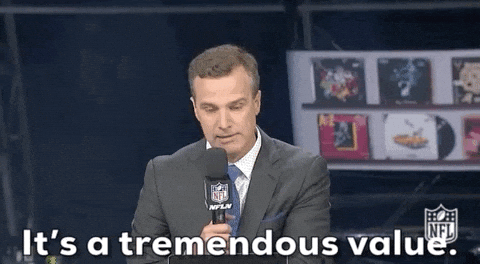Investing Styles Explained: Find the Right Strategy for Your Goals
Value, Growth, Momentum, ESG or Low Volatility Investment Strategy ?
Since I’ve been on Substack, I’ve seen a ton of great and interesting communities. But for a beginner investor, navigating all the different styles and strategies can feel overwhelming.
We all think differently, believe in different investment theories, and approach the market in our own ways. Yet, I’ve noticed that no one clearly defines the core investment strategies in a simple way for long-term investors.
By understanding these strategies, you’ll figure out what suits you best, and which community aligns with your approach.
Let’s define each investing strategy in simple terms.
Value – Buying stocks that are undervalued relative to their fundamentals, often in overlooked or struggling sectors.
Growth – Investing in companies with high revenue or earnings growth, even if their valuations are expensive.
Momentum – Buying recent winners and selling recent losers, betting that trends will continue.
ESG – Prioritizing companies with strong environmental, social, and governance practices while avoiding controversial industries.
Quality – Focusing on financially strong, profitable companies with stable earnings and low debt.
Low Volatility – Investing in stocks with the smallest price swings to reduce overall portfolio risk.
Value & Growth Investing strategy
Markets love cycles. One year it’s all about tech stocks going to the moon, and the next, the market decides it only wants to own banks and oil companies. If you’ve been investing long enough, you’ve seen this happen over and over again. And nothing captures this battle better than the endless rotation between value and growth stocks.
In the early 2000s, value investing was king. The dot-com bubble had just burst, and suddenly, tech stocks that had been trading at nosebleed valuations were crashing back to earth. Meanwhile, beaten-down financials, industrials, and energy stocks surged. From 2000 to 2002, small-cap value stocks were the best performers in the market. Investors who stuck with value were handsomely rewarded.
Then, the 2010s flipped the script. Growth stocks, particularly U.S. large-cap tech names, dominated for an entire decade. The Russell 1000 Growth Index returned about 400% from 2010 to 2020, more than doubling the return of the Russell 1000 Value Index. If you weren’t in FAANG stocks (Facebook, Amazon, Apple, Netflix, Google), you were probably underperforming. By the end of 2021, growth had completely outpaced value.
But right when people started believing “growth will always win,” the market flipped again. In 2022, value outperformed growth by roughly 22 percentage points as rising interest rates slammed high-multiple growth stocks. Then, in 2023, growth took back the lead, erasing the advantage.
The lesson? No single strategy wins forever. The market is cyclical, and leadership rotates over time. If you’re betting that one style will always outperform, history suggests otherwise.
Momentum Investing strategy
Momentum investing, buying recent winners and dumping losers is another strategy that thrives in certain market environments and gets crushed in others. The early 2000s were brutal for momentum investors. The academic momentum factor lost 82% in 2009 as markets sharply reversed, wiping out nearly all gains for the 2000s. This happened because momentum strategies had loaded up on the worst-performing stocks of 2008, which suddenly became the biggest winners in 2009, leaving momentum portfolios on the wrong side of the trade.
But momentum came roaring back in the 2010s, delivering strong returns in a long bull market. From 2010 to 2019, the MSCI USA Momentum Index outperformed most other factors, gaining roughly 30% more than broad market indexes. When the market trends consistently, momentum shines. But when reversals hit, momentum strategies can experience massive drawdowns.
ESG Investing strategy
Sustainable investing has gained significant traction in the last two decades. ESG (Environmental, Social, and Governance) investing aims to align portfolios with ethical or sustainable principles while still generating competitive returns. And so far, it has largely kept up with traditional investing.
The MSCI KLD 400 Social Index, one of the oldest ESG indexes, has slightly outperformed the S&P 500 since 1990. A 2015 Morgan Stanley study also found that high-ESG companies tend to deliver higher risk-adjusted returns over time. In bull markets led by tech stocks (which many ESG funds are overweight in), ESG investing has performed well. However, ESG funds struggled in 2022 when energy stocks surged, as most ESG portfolios are underweight oil and gas companies.
The takeaway? ESG strategies don’t necessarily sacrifice returns, but they do introduce sector biases that can lead to underperformance in certain market conditions.
Quality and Low Volatility Investing strategy
Investors who prioritize stability over high returns often lean toward quality and low-volatility strategies.
Quality investing focuses on financially strong, profitable companies that tend to hold up well during downturns. While quality stocks might not deliver the biggest gains in speculative bull markets, they historically shine when markets turn ugly. The 2008 financial crisis and the 2020 COVID crash saw quality stocks hold up far better than the broader market.
Low-volatility investing takes a different approach focusing on stocks with the least price swings. The S&P 500 Low Volatility Index, for example, has historically delivered market-like returns but with significantly lower drawdowns. During the 2020 crash, low-vol stocks only fell about 26%, while the broader S&P 500 dropped 34%.
The downside? Both quality and low-volatility strategies tend to lag when markets are roaring higher, as investors pile into riskier, high-growth names.
Which investing strategy is right for you?
There’s no one-size-fits-all answer. Each strategy appeals to different types of investors based on their risk tolerance, time horizon, and market outlook.
Value: Best for patient, long-term investors who can stomach underperformance in certain cycles. Great for contrarians and those who prefer dividend income.
Growth: Ideal for aggressive investors looking for maximum upside and who can tolerate volatility. Younger investors with a long time horizon often favor growth.
Momentum: Works well for active traders and quantitative investors who can monitor trends closely. Not suited for buy-and-hold investors.
ESG: Appeals to investors who want their portfolio to align with their values while still maintaining market-like returns. Best for long-term, moderate-risk investors.
Quality: A strong option for conservative investors seeking stable, financially strong companies. Suitable for those nearing retirement.
Low Volatility: Ideal for risk-averse investors who want equity exposure with fewer drawdowns. Perfect for retirees or anyone prioritizing capital preservation.
Where does Freedom Trades fit?
At Freedom Trades, we don’t box ourselves into just one strategy, we use what works. Our approach blends growth investing for long-term wealth-building with momentum trading for short- to medium-term gains.
Growth Focus: We look for high-quality companies with long-term upside, especially in tech, innovation, and disruptive industries. We believe in holding winners for years, riding out volatility for massive compounding.
Momentum Trading: On the swing trading side, we take advantage of market trends, capturing explosive moves in stocks that are breaking out or showing strong relative strength. This lets us generate profits faster while still managing risk.
The message I want you to stay with
The market is a cycle, and no single style will outperform forever. The best investors understand this and diversify accordingly. Betting entirely on one factor whether it’s value, growth, momentum, or anything else means exposing yourself to its inevitable periods of underperformance.
Instead of chasing the hottest trend, play the long game. Diversify across styles, stay disciplined, and remember: what’s winning today might not be leading tomorrow. But if you structure your portfolio wisely, you won’t have to worry about trying to time the next rotation.








